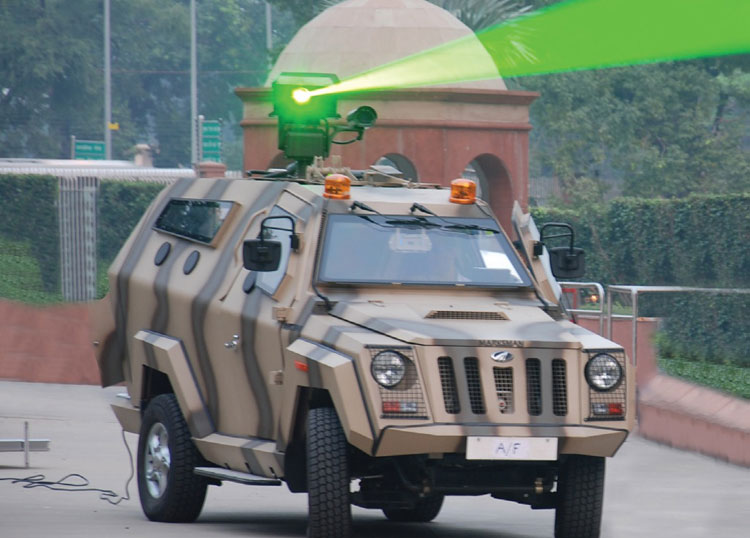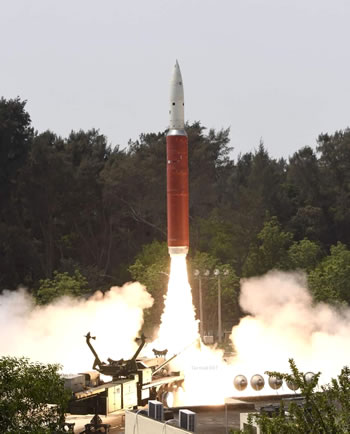INDIAN ARMED FORCES CHIEFS ON OUR RELENTLESS AND FOCUSED PUBLISHING EFFORTS

The insightful articles, inspiring narrations and analytical perspectives presented by the Editorial Team, establish an alluring connect with the reader. My compliments and best wishes to SP Guide Publications.

"Over the past 60 years, the growth of SP Guide Publications has mirrored the rising stature of Indian Navy. Its well-researched and informative magazines on Defence and Aerospace sector have served to shape an educated opinion of our military personnel, policy makers and the public alike. I wish SP's Publication team continued success, fair winds and following seas in all future endeavour!"

Since, its inception in 1964, SP Guide Publications has consistently demonstrated commitment to high-quality journalism in the aerospace and defence sectors, earning a well-deserved reputation as Asia's largest media house in this domain. I wish SP Guide Publications continued success in its pursuit of excellence.
Gearing Up For Star Wars
 |
The Author is Former Director General of Information Systems and A Special Forces Veteran, Indian Army |

Recent news from the defence technology battlefront indicates that the Defence Research and Development Organisation is planning to provide combat capabilities to Armed Forces for fighting star wars type conflicts. According to media, DRDO will develop different Directed Energy Weapons (DEWS) based on high energy laser, microwave and particle beams with variants up to 100-kilowatt power in collaboration with the private industry. The plan is to go for a national-level plan for developing DEWS that will include ‘chemical oxygen-iodine’ and ‘high-power fibre’ lasers to a secretive ‘Kali’ particle-beam for ‘soft-kills’ against incoming missiles and aircraft. But these DEWS are nowhere close to becoming operational.
The 2010 Technology Perspective & Capability Roadmap of the Ministry of Defence (MoD) had identified DEWs and ASAT (anti-satellite) weapons as thrust areas over next 15 years; becoming operational by 2025? In March 2015, DRDO’s Laser Science & Technology Centre (LASTEC) began initial testing ‘Aditya’ - a vehicle-mounted gas dynamic laser-based DEW system which is a technology demonstrator to prove beam control technology. A 2015 DRDO bulletin titled ‘Technology Focus’ stated that LASTEC with the help of a collaborator had developed a unit of 1kW ‘single mode fibre laser’ and work was on for developing 5kW and 9kW fibre laser sources. Subsequent news reports talked of DRDO testing a 1KW laser weapon system mounted on a truck at Chitradurga in Karnataka towards end August 2017 in presence of Defence minister Arun Jaitley which an official described as, “The laser beam hit a target located 250 metres away. It took 36 seconds for it to make a hole in the metal sheet.” The next step was to test a higher powered laser, 2KW, mounted on the truck against a metal sheet located at a distance of 1 km. Other key development is to be a 25-kilowatt laser systems to destroy missiles during their terminal phase under 10 km range, where the missile skin will be heated to 200-300 degree leading to warhead inside the missile to detonate mid-air and ultimate DEWs which will be developed over a period of few year will be that of 100-kilowatt solid-state laser systems, mounted on aircraft and ships, to destroy missiles in their boost phase itself. As of now the DRDO has developed two anti-drone DEW systems, which will now be manufactured in large numbers with the help of the domestic industry; one is a trailer-mounted DEW, with a 10-kilowatt laser to engage aerial targets at a 2-km range while the other is a compact tripod-mounted one, with a 2-kilowatt laser for a 1-km range. These DEWS have been demonstrated to the Armed Forces, intelligence agencies and field forces. Both these systems can down micro drones by either jamming their command and control links or damaging their electronics through laser-based DEWS.

MoD’s 2013 Technology Perspective & Capability Roadmap (TPCR) document pointed at a key requirement of electromagnetic pulse weapon (microwave weapon) for countering missiles fired at ships, tanks and aircraft. The last MoD’s TCPR issued in 2018 provided to the industry an overview of equipment that is envisaged to be inducted into the Indian Armed Forces up to the late 2020s emphasising ‘Make in India’. It talked off Unmanned Aerial Platforms (both Unmanned Aerial Vehicles (UAVs) and Mini Air Vehicle (MAVs), High Capacity Radio Relay (HCRR) and Laser Based Communication System among other equipment but makes no mention of DEWS per se, which gives the impression that government does not envisage armed forces being equipped with these before 2030. But we must strive to advance their induction to the best of our ability. A comparison of military balance shows that China has a competitive military advantage over India in all dimensions of battle space, more pronounced asymmetries being in strategic weapons, stealth maritime capability, force multipliers, cyber space, outer space, information space and asymmetric warfare. Future conflicts will be five dimensional; aero-space, land, sea, cyber and electro-magnetic. Information Warfare will include NCW, C4I2 warfare, electronic warfare, cyber warfare and other forms of operationalised cyberspace. Information superiority will be as important as land, sea and aero-space superiority. Space Combat, Cyber Space Combat, Radiation Combat, Robotic Combat, Nanotechnology Combat will add to forms of combat. Operations will be increasingly inter-agency involving greater application of all elements of national power. States will continue to employ hi-tech irregular forces; asymmetric and hybrid wars will be a regular affair.

Bridging the asymmetries vis-ŕ-vis China in all this is a gigantic task that we must focus on. Past years China has been developing DEWS like lasers, high power microwave (HPM) systems and electromagnetic pulse (EMP) generating weapons. Chinese Defence-industrial reforms have three vertices; commercial ICT companies, state R&D institutes and funding infrastructure, and the military. Civilian entities are used to conduct military work, synergy facilitated by growing use of COTS technology and rise of China as a centre for global ‘fabless’ IC production, both permitting PLA to access advanced microelectronics at the heart of modern military sensor and weapon systems. PLA Colonels Qiao Liang and Wang Xiangsui wrote in their Book ‘Unrestricted War’, “When faced with a technologically superior enemy, it is necessary to dare to completely upset the order of the cards in one's hands and reorganise them in accordance with the needs of war and the interests of a nation.” We need to take a cue from this but while hybrid war can be waged in many ways, technology at best is defeated by technology itself. This needs special focus with China having bared its future intentions through its invasion in Ladakh. Therefore we must focus on R&D and development under ‘Make in India’ using total national resources and in conjunction friendly countries specific to capability building in ISR, aerospace, cyberspace, electromagnetic domains, accelerating credible C4I2 structures, ability to paralyze enemy C4I2 infrastructure, stand-off and stealth weapons to pre-empt enemy attack, adequate mix of DEW, PGMs, ASATs, UAVs, MAVs, quantum communications, indigenous semi-conductors and operating system, computer hardware and critical software and telecommunication systems.
Though we still have not defined a national security strategy for ourselves and a have not undertaken a worthwhile strategic defence review, we need a total strategic transformation from the defensive approach to offensive in terms technological prowess. India needs to marshal all its resources, muster required political will, not merely banking on resilience of troops on ground. This is essential if we want to beat China in its game, both in conflict, as also winning ‘without firing a shot’ using technology to give the required signal(s) to China when required.





